Table of contents
- Letter from the Board
- Modelica Association
- Conferences and user meetings
- Vendor news
- News from libraries
- Education news
Letter from the Board
Dear Modelica, FMI, SSP, DCP, eFMI interested,
the proceedings of the International Modelica Conference 2023 are available from Linköping University Press (one pdf-file with all papers, as well as an individual pdf-file for every paper; DOI: https://doi.org/10.3384/ecp204).
Its a pleasure to announce that the date and location of the International Modelica Conference in 2025 is decided: It will take place September 8-10, 2025 in Lucerne, Switzerland and is organized by Prof. Ulf Christian Müller from Lucerne University and the Modelica Association.
In 2024, the following Modelica Conferences will take place:
- The American Modelica Conference 2024 will be held October 14-16 2024 in Storrs, Connecticut, organized by the North American Modelica Modelica Users Group NAMUG, The University of Connecticut and the Modelica Association. For more details see the article below.
- The Asian Modelica Conference 2024 will be held November 21-22 2024 in Seoul, South Korea, and is organized by the Institute of Vehicle Engineering, iVH and the Modelica Association. For details, please check the conference website.
A first Beta of the upcoming version 4.1.0 of the Modelica Standard Library has been released containing about 400 fixed issues. For details, see the release notes. With this version also an improved process has been established by the MA Backoffice with nightly, automatic tests.
At the last Modelica Association Assembly Meeting on Feb. 27, several changes of the MA Bylaws have been accepted by a majority of the votes. These changes take effect, if the second, required voting at the MA annual assembly meeting on May 28 will also be positive. The changes include adaptations due to legal requirements, clarification of voting of organizational members, fully adaptation of electronic meetings with increased flexibility of assembly meetings and other simplifications.
If you have interesting news for the Modelica, FMI, SSP, DCP, eFMI communities, please
follow the submission guidelines.
The deadline for articles for the next newsletter is Friday, July 12, 2024.
Martin Otter on March 11, 2023
Chairperson of the Modelica Association
This article is provided by Martin Otter (Modelica Association)
Modelica Association
Update of MAP FMI Project rules - clarifying membership

Update of FMI Project rules - clarifying MAP FMI Project membership
The FMI Steering Committee has approved new rules for the FMI Project that clarify the different rights and duties of project members.
Project members are divided into three groups with a hierarchy of duties and rights:
- Steering Committee Members are a subset of
- Contributing Members which are a subset of
- Advisory Commitee Members.
The FMI Advisory Committee will be strengthened to get more input and feedback from the industry. It is planned to have two FMI Advisory Committee meetings per year. The membership in the FMI Advisory Committee is now possible after approval by the FMI Steering Committee without signing the Contributors’ License Agreement (CLA).
To join the FMI Project as a Contributing or Advisory Committee Member please write to contact@fmi-standard.org.
This article is provided by MAP FMI
Conferences and user meetings
OpenModelica Workshop 2024
The 16th OpenModelica Annual Workshop organized by the Open Source Modelica Consortium was held successfully in Linköping, Sweden, on February 5, 2024. Workshop chairs were Adrian Pop and Martin Sjölund. OSMC director, Francesco Casella, presented the OpenModelica status and directions, system simulations of large energy system models. New results and applications regarding the OpenModelica platform were presented, including modeling and simulation of large-scale models, Model-based Balance of Operation for Carbon Capture and Storage, Modelling larger-scale district heating networks, Technical overview of OpenModelica status, Status of the new Backend, CI/CD with OpenModelica for Library and Tool developers, integration with CRML
The program and the presentations are available here
 Francesco Casella, OSMC director presents OpenModelica ongoing work and future plans.
Francesco Casella, OSMC director presents OpenModelica ongoing work and future plans.
 Adrian Pop, OSMC technical coordinator and workshop chairperson, presents the current status and planned future developments of OpenModelica.
Adrian Pop, OSMC technical coordinator and workshop chairperson, presents the current status and planned future developments of OpenModelica.
This article is provided by Adeel Asghar, Francesco Casella Open Source Modelica Consortium
SimulationX User Conference 2024

Join us for the SimulationX User Conference 2024: Hybrid Edition, where industry experts will share insights into digital innovation with system simulation solutions. Hosted by ESI’s SimulationX core team in Dresden, Germany, this hybrid event offers a curated showcase of digital success stories across industries, tailored to help you to succeed in your existing arena. Participate in a full 1-day program followed by advanced training on day 2. We encourage you to present and inspire the community by submitting an abstract before May 31, 2024. Highlights include keynote talks on digital transformation, user-driven presentations, networking opportunities, exclusive updates from the core team, and specialized training sessions to enhance modeling and simulation skills. Register now to be part of this collaborative and user-driven event!
Learn more about the SimulationX User Conference 2024
This article is provided by Majid N. Aziz, Andreas Abel ESI Group
American Modelica Conference 2024
We would like to announce the American Modelica Conference 2024, which will be an in-person conference event, with an option to watch presentations streamed online for a reduced conference admission fee.
The conference will take place at the University of Connecticut in Storrs in the Innovation Partnership Building from October 14–16, 2024. It is organized by NAMUG, the North American Modelica Users’ Group, in cooperation with the Modelica Association. Join us in person in Storrs or from the comfort of your own home.

About the Conference
As part of the conferences promoted by the Modelica Association, the American Modelica Conference 2024 is the main event in North America for users, library developers, tool vendors and language designers to share their knowledge and learn about the latest scientific and industrial progress related to Modelica, FMI, SSP, eFMI and DCP. The program will cover processes and tools for the modeling of complex physical and cyber-physical systems as applied to a wide range of research and industrial applications.
In addition to paper presentations, the conference features several Modelica tutorials for beginners and advanced users, as well as industrial user presentations, vendor sessions, and an exhibition. The previous American Modelica conference in 2022 was also streamed, giving many Modelicans in other continents the opportunity to watch presentations on the latest updates on Modelica-related research and innovation. In this version of the conference, we want to combine the ease of attendance by remote participants from other continents with the stimulating environment of an in person event with lively discussions in the breaks and an in-person conference dinner!
Please note that full paper presentations are required to be in person, while industrial user presentations can be given remotely.
Student Paper Competition
In building on the successes of the previous American Modelica conference, we are also happy to announce a Student Best Paper competition. Additional details are available in the call for papers.
Call for papers, user presentations and tutorials
Please see the call for papers for details about paper submissions, and the calls for industrial user presentations, workshops and tutorials, and vendor presentations. Please look at the author instructions before submitting. The submission deadlines are as follows:
- May 1, 2024: Submission of full papers
- June 1, 2024: Submission of extended abstracts for presentation-only contributions, workshops and tutorials
- August 1, 2022: Notification of acceptance for papers and presentations
- August 30th, 2022: Submission of final papers and one-page abstracts
- October 7th, 2022: Submission of final presentations
Sponsorship opportunities
The American Modelica conference will be your opportunity to meet your customers again in a personal setting, at a great location.
For sponsorship opportunities, please send an email to: modelicaNA2024@groups.liu.se
Organization and Contact
The conference is organized by NAMUG in cooperation with the Modelica Association.
For general questions, please send an email to: modelicaNA2024@groups.liu.se
Conference Board
- Conference Co-Chair Dr. Michael Tiller, Juliahub
- Conference Co-Chair Dr. Hubertus Tummescheit, Modelon
- Local Co-Chair Prof. George Bollas, University of Connecticut
- Program Chair Prof. Luigi Vanfretti, Rensselaer Polytechnic Insitute
- Program Chair Dr. Michael Wetter,Lawrence Berkeley National Laboratory
- Conference Excecutive Coordinator Dr. Christopher Laughman, Mitsubishi Electric Research Laboratories
- Behnam Afsharpoya, Dassault Systemes
This article is provided by Luigi Vanfretti, North American Modelica Users Group)
Vendor news
orchideo | easySSP v1.2.11 now available
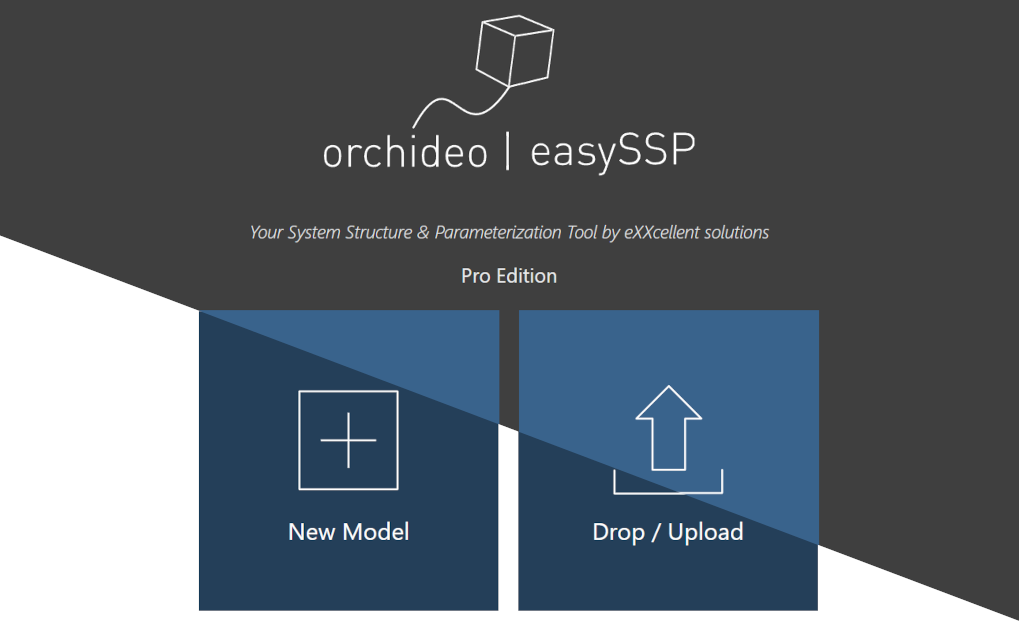 orchideo | easySSP v1.2.11 is now available with a new look, dark mode and other new features.
orchideo | easySSP v1.2.11 is now available with a new look, dark mode and other new features.
New Styling and Dark Mode
The new version comes with an updated user interface styling. A new navigation bar enables seamless switching between easySSP’s model editor, simulation and traceability module.
Those who love darker colors, can use easySSP in the new dark mode.
Other New Features
Among other things, the release provides several new features:
- easySSP now supports 2-factor authentication login
- Model Editor: The OSI connector support has been updated and allows to explicitly define the OSI version
- Model Editor: You can now clone complete System Structures with just one click
- Trace: A new “What You See Is What You Get” editor offers convenient editing of Markdown content
- Trace: SSP model resources can now be directly viewed and edited from the process documentation
- Trace: Suggestions and direct sub entry creation makes the SRMD metadata editing faster
easySSP is completely based on open standards like SSP, FMI and SSP Traceability. Check out easy-ssp.com for more information!
This article is provided by Gregor Hermann, Peter Lobner eXXcellent solutions
Just released: System Modeler 14!
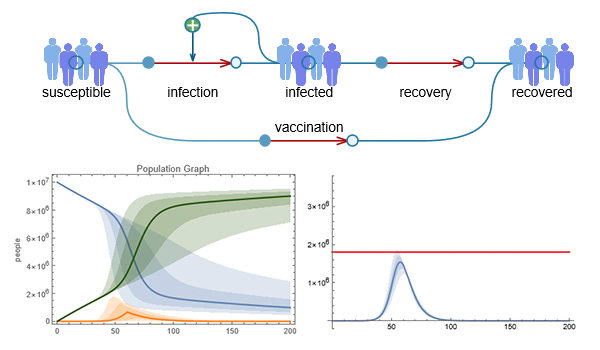
The new version comes with features that will streamline your model development workflows. Some of the key features are:
- Analyze Models using Uncertainties: Attach uncertainties to parameters, initial values or inputs and observe their effect on the system.
- Automatic Unit Validation & Inference: Create robust and user-friendly models, with validation of unit consistency and automatic inference of units through equations and connections.
- Distribute Libraries: Ensure smooth installation of your libraries including handling of licenses, assets and dependencies.
Click here to see more examples and videos on the latest System Modeler features.
This article is provided by Ankit Naik Wolfram
OpenModelica News
Version 1.22 bug fix releases
Some issues were identified in the 1.22.0 release. We released two bug fix releases 1.22.1 and 1.22.2. 1.22.3 will soon be available.
The releases contains following improvements:
- Bug fixes in the OMEdit GUI.
- Issues related to the replaceable components and classes in the parameters window.
- Support for final and each modifiers.
- FMI Export
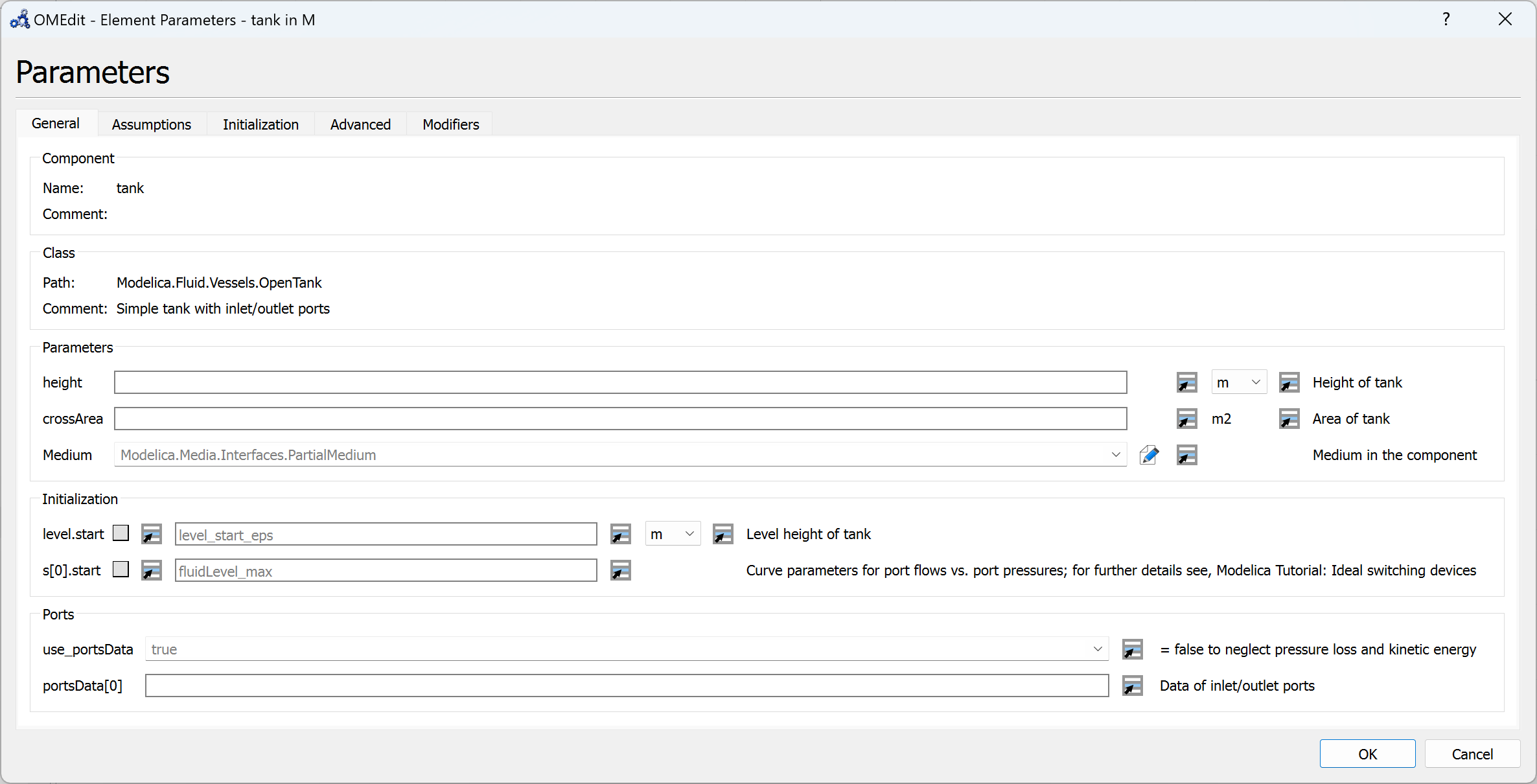
For complete list of bug fixes see milestones 1.22.1, 1.22.2 and 1.22.3
Library Testing
Two GitHub actions for automated testing and verification with OpenModelica have been published:
- OpenModelica/setup-openmodelica: Install OpenModelica and Modelica libraries on GitHub Ubuntu and Windows runners.
- OpenModelica/openmodelica-library-testing-action: Run OpenModelicaLibraryTesting scripts to test Modelica libraries with OpenModelica on GitHub Ubuntu and Windows (experimental) runners.
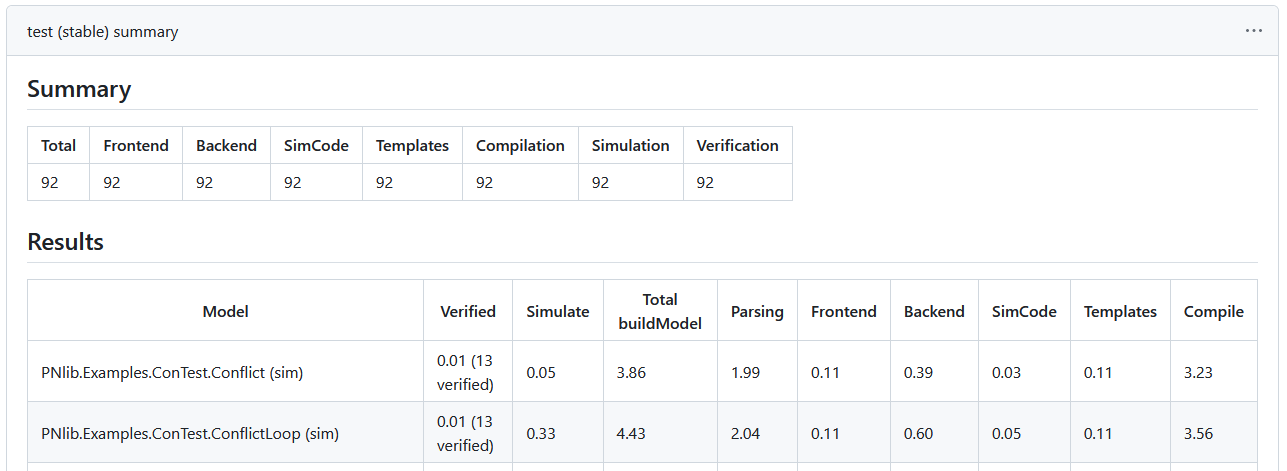 Example summary of openmodelica-library-testing-action for Modelica library PNlib.
Example summary of openmodelica-library-testing-action for Modelica library PNlib.
This article is provided by Adeel Asghar, Francesco Casella, Andreas Heuermann Open Source Modelica Consortium
Modelon News

New and Updated Features in Modelon Impact
We’ve been hard at work making significant enhancements to Modelon Impact. Here are a few of the product highlights from the recent 2024.1 release.
New Feature: Workspace Sharing
Modelon Impact users on Modelon Managed Cloud can now share their workspace with a simple web link. Workspaces, along with their corresponding models, projects, libraries, and library dependencies, can now be accessed and copied by another Modelon Impact user. This enables easy transfer of work between colleagues and higher levels of collaboration on the same projects.
Updated Feature: Excel Add-In
We’ve updated our add-in that connects Microsoft Excel with Modelon Impact for easily configuring and running multiple experiments on a model. Along with usability enhancements, outputs from both steady-state and dynamic simulations can directly populate Microsoft Excel for further data analysis.
We’ve made multiple additions and improvements across the platform, including new library content, an improved debugging experience, access to earlier solvers, and more. Read the full release notes here.
Newly Released Modelon Library Content
We’ve made notable enhancements and additions to our Modelica-based libraries with its 2024.1 release. Below are the highlights of this release by each industry.
Energy and HVAC
This blog post highlights recent updates to Modelon’s libraries, specifically tailored for the energy and HVAC-R industries, offering expanded heat exchanger model options, enhanced flexibility in routing configurations, and support for additional industrial data formats. Read the blog.
Aerospace
This blog post outlines recent updates to Modelon’s libraries tailored for the aerospace industry, focusing on hydrogen storage tank architectures and more electric aircraft models. The enhancements include support for horizontal tank configurations, detailed fill and drain simulations, and improved steady-state tank sizing for hydrogen storage systems. Additionally, upgrades to the Electrification Library and Environmental Control Library introduce new sizing workflows, simplified electrical connectors, and updates to environmental control systems such as wing ice protection.
Read the blog.
Automotive
This blog post highlights updates to Modelon’s libraries relevant to the automotive industry, focusing on enhanced thermal management for electric vehicles (EVs) and improved sizing capabilities for EV components. The updates include improvements in modeling integrated thermal systems, such as heat pumps and refrigerant-coolant systems, along with the ability to size components based on operational requirements for dynamic and steady-state simulations. Additionally, the Vehicle Dynamics Library now supports real-time Driver-in-the-Loop simulation with rFpro, enabling users to export vehicle models as Functional Mockup Units (FMUs) for real-time simulation. Read the blog.
New Blogs
Predictive Motion Control Considering Body Attitude Constraints for Four in-Wheel Motor Vehicles – IEEE CDC 2023 Winners
This post details the innovative use of Model Predictive Control (MPC) to develop a controller for a vehicle dynamic system. The proposed controller was developed for the 62nd IEEE Conference on Decision and Control (CDC 2023) Benchmark Challenge for Autonomous Driving Control, and it stood out from fierce competition among dozens of teams, winning the gold award. Read the blog.
Looking Ahead to Innovations in Aircraft Hydrogen Storage in 2024
Modelon’s Aerospace Industry Director, Michael Sielemann, sees three essential design and engineering opportunities that can streamline progress for aircraft hydrogen storage in 2024: gravimetric efficiency, insulation choices, and fueling times. Read the blog.
Upcoming Events

Modelon Innovate 2024
Modelon Innovate is an international event focused on system simulation for innovation and product design within commercial industries. This event consists of two days – a conference day and a workshop day. The conference day consists of insightful presentations by speakers utilizing system simulation at their organizations. The workshop day consists of hands-on, instructor-led classes to help Modelon users improve their capabilities with Modelon technology.
Early bird pricing ends on March 31st, 2024.
Learn more about Modelon Innovate
This article is provided by Swati Tyagi (Modelon)
News from libraries
Thermodynamics Connector library
The Multiflash Media Connector library has been renamed to Thermodynamics Connector library with the upcoming Dymola 2024x Refresh 1 release. The reason for the change in name is the expanded functionality beyond the existing interface to Multiflash external equilibrium solvers and fluid property data.
In addition to the Multiflash interface, the Thermodynamics Connector library v1.2.0 now provides an interface to CAPE-OPEN compatible property packages. The new interface supports the integration of external multi-phase, multi-component phase equilibrium calculations from CAPE-OPEN supporting software into Modelica models.
The CAPE-OPEN standard enables CAPE (Computer-Aided Process Engineering) applications to interoperate. CAPE-OPEN is developed and maintained by the CO-LaN organization (CAPE-OPEN Laboratories Network, www.colan.org). Dymola, with the Thermodynamics Connector library, is the first PME (Process Modelling Environment) to implement CAPE-OPEN’s COBIA middleware. COBIA is the platform independent replacement for the legacy, COM-based CAPE-OPEN architecture.
This article is provided by Philip Jordan (Dassault Systemes Deutschland GmbH)
TIL Add-On Adsorption – Modeling Basics
Adsorption processes are well established methods for gas separation and are becoming increasingly important for direct air capture of CO2 and air drying in battery production. These processes can be dynamically simulated using TIL Adsorption.
Summary of the technical details:
- Adsorption equilibrium: Various isotherm models (e.g. Langmuir, Sips or Dubinin equations) are used to model the relationship between temperature, loading of the adsorbent and partial pressure of the adsorptive.
- Adsorption kinetics: The adsorption kinetics are modelled within an adsorption cell consisting of a gas and an adsorbent cell.
- Mass Transfer: The mass transfer between gas and adsorbent cell determines whether adsorption or desorption takes place. The adsorption mass flow rate between gas and adsorbent cells is calculated using the linear driving force approach.
- Heat Transfer: The mixture of convective heat transfer and heat conduction between gas and adsorbent is modelled using an effective thermal resistance.
- Calibration: Calibration of heat and mass transfer coefficients is crucial for accurate simulation.
The TIL Adsorption model library can be used to perform comprehensive plant simulations like temperature swing adsorption:
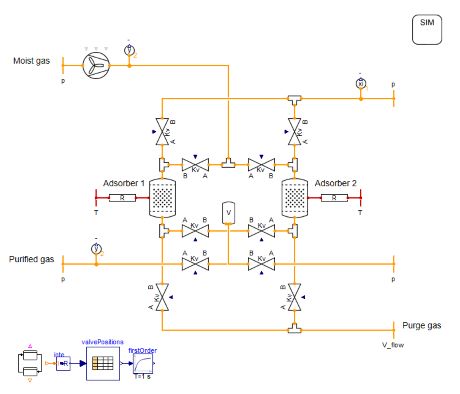
To learn more about the basis of modeling adsorption read the blog article: TIL Adsorption
Feel free to contact us for a test license at info@tlk-energy.de
This article is provided by Helena Vorspohl (TLK Energy GmbH)
Announcing Wolfram System Modeler’s Rotating Machinery Library (Free)!
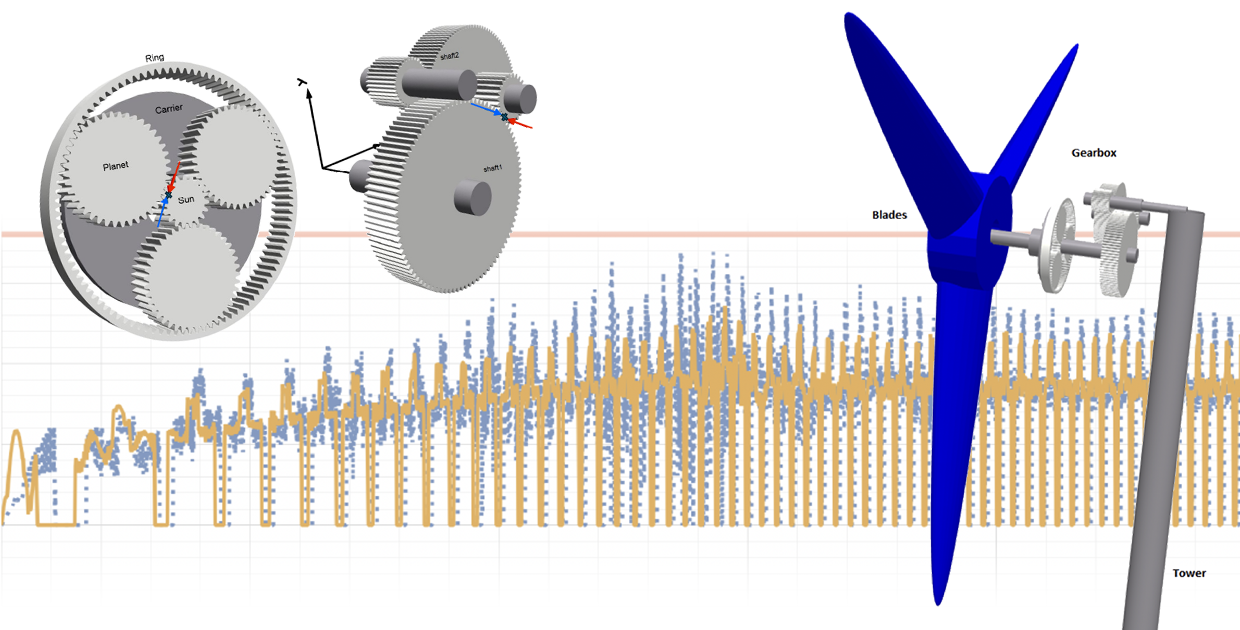
The Rotating Machinery library allows you to test novel designs or identify faults in machinery such as turbines, motors and drivelines. It contains detailed models of bearings, gears, flexible shafts, and discs. By utilizing this library, you can compare different designs to understand their effects, such as vibrations, deflections and contact stresses.
Some of the key features are:
- Quickly configure detailed bearings using readily available catalog data from manufacturers like SKF, NSK, KOYO, TIMKEN, and FAG.
- Quickly configure detailed gears by defining properties like the gear tooth profile, material data and gear dimensions.
- Simulate contact forces between spur gears based on the Hertzian Contact theory.
- Flexible components enabling you to observe deformations.
- Fully compatible with Modelica MultiBody library with the same connectors.
Click here to download the library.
This article is provided by Ankit Naik Wolfram
DLR introduces DLR Visualization2 Library
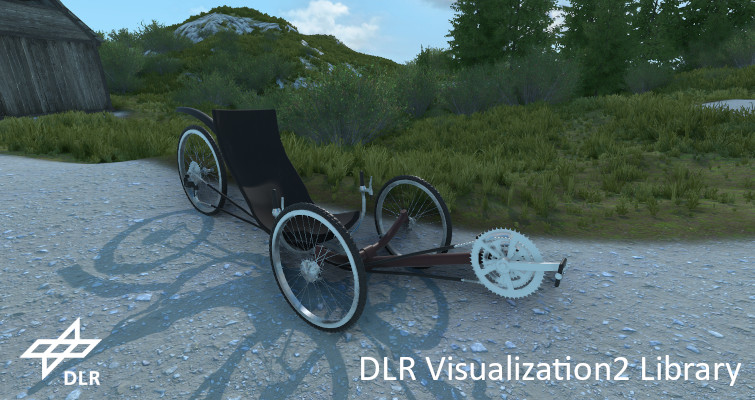
Elevating Modelica Simulation with Cutting-Edge Visualizations
DLR-SR announces the DLR Visualization2 Library, a Modelica library engineered to enable 3D and 2D real-time visualizations for multi-domain simulations with Modelica / Simulink / Python / Julia / C / C++.
Designed to meet the evolving needs of engineers and simulation professionals, the DLR Visualization2 Library boasts a range of features that allow for the creation of high-quality, interactive simulation experiences with state of the art realistic graphics.
Key Features of the DLR Visualization2 Library:
- Rigid Visualizer Blocks:
- Parametrical shapes (boxes, spheres, gearwheels, springs, etc.)
- CAD files support in current formats: glb, 3ds, obj, stl
- (Georeferenced) terrain databases, including CESIUM streaming of map data
- Flexible Visualizer Blocks:
- Flexible surfaces with texture (image and video, render to texture of camera image)
- Flexible, free deformable CAD models for the visualization of structural elasticity
- Support for rigged CAD models (e.g. serial kinematics, robots, human bodies, etc.)
- 2D Overlays and Graphical User Interfaces:
- 2D Overlays such as lines, polygons, textures
- Predefined elements like graphs, maps, and diagrams
- GUI elements including buttons, sliders, checkboxes, etc., for interactive simulations
- Video Export:
- Video export in common formats such as H.264, H.265, WMV, MPEG4, etc.
- Automatic video export/screenshots during or after the simulation for effortless documentation
- Cameras and VR:
- Cameras, free movable or fully controlled by the simulation
- Multiple views on the scene, including picture-in-picture
- Fullscreen and multi-monitor support
- OpenVR (HTC Vive, Oculus Rift) compatibility for seamless VR simulations
The DLR Visualization2 Library is commercially available via LTX. For the free community version and more information on the libary, visit here.
This article is provided by Tobias Bellmann (DLR)
Education news
System Modeler Study Group Registration Now Open!
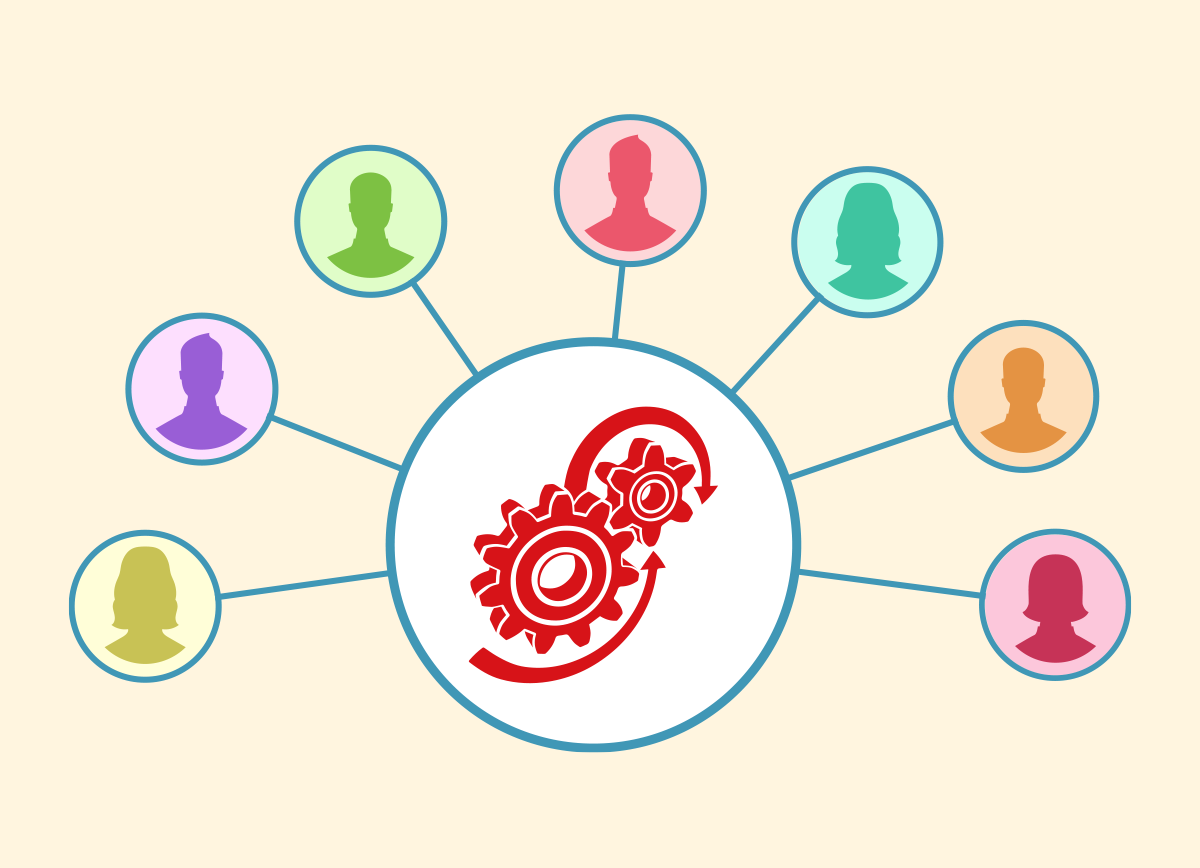
Learn modeling principles applicable to dynamic systems during this two-week, hands-on, interactive program. We’ll cover examples that range from simulating the spread of infectious diseases to predicting the cash flow dynamics of a subscription-based business and modeling the intricate behavior of drones. Register today!
- Dates: April 9–19
This article is provided by Ankit Naik Wolfram
Claytex technical blog

Claytex publishes a technical blog covering all things Modelica and Dymola.
How to work with Modelica Files using an inbuilt Modelica Function (or three!)
Many cases exist where you might wish to automatically generate Modelica files. One example would be to generate variants of a model with permutations. Or perhaps generating data records. These functions surround the creation and customization of Modelica models.

Read the complete article here
Quick guide to a Solver (Integration Algorithm), Tolerance and Output Interval in Dymola
In this blog post, we describe how to get started choosing your solver, tolerance and output interval in Dymola.

Read the complete article here
The MultiRun tool localized regression testing made simple
With no off-the-shelf tools available, Claytex have developed our own tools for regression testing when building model libraries. One of them, the RegressionTest tool, is designed to be used as an integral element of a library development cycle. The other is the MultiRun tool, which provides a way for the model developer to quickly regression test a smaller batch of experiments in an automated way. This blog post serves as a quick overview of the MultiRun tool.

Read the complete article here: here
How to Move Dymola to a New PC
You may have been lucky and your IT department wants to update your PC, or you may have been unlucky and your PC has died; either way this means you will need to move Dymola to your new PC. In this blog post I’m going to go through what you’ll need to do to move your Dymola install to a new PC.

Read the complete article here
This article is provided by Mahdieh Mehrabi (Claytex)